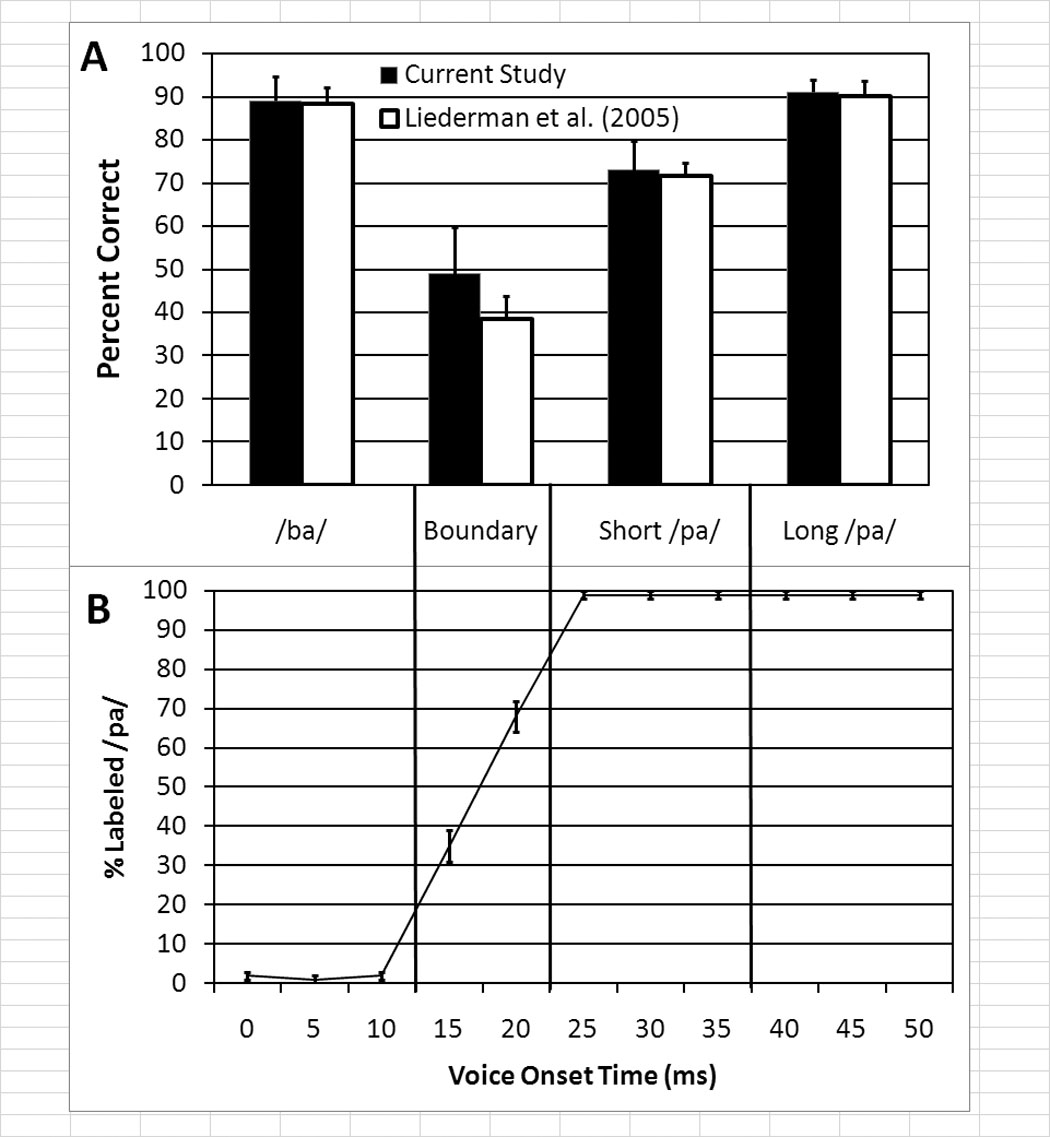Figure 1.

Perceptual characteristics of the consonant-vowel (CV) syllable continuum used in this study. (A) The bar graph depicts the percentage of time (mean with standard error bars) sequentially presented identical stimuli were correctly identified as matching during the discrimination task for the four VOT sectors defined in the current study. Data for the participants in the current study and participants in Experiment 3 from Liederman et al. (2005) are depicted. (B) The line graphs represent the percentage of trials that each VOT stimulus was categorized as sounding like the syllable /pa/. Data from Liederman et al (2005) in which 51 participants categorized all of the VOT stimuli in this continuum. The data shown are an average of the categorization before and after a VOT discrimination task. Syllables with shorter voice-onset times (VOTs; i.e., between 0ms and 10ms) were almost invariably perceived as a /ba/ while syllable stimuli whereas longer VOTs (25ms–50ms) were perceived as a /pa/. Stimuli with VOTs between the two phonemic categories (i.e., VOTs of 15 and 20 ms) represent a boundary region that is ambiguous.
